Fish and wildlife science in support of heritage preservation, efficient decision making, wild ungulate management, and outdoor recreation
FORT researchers provide sound science to support the Department of Interior in its efforts to preserve American heritage, streamline species listing decisions and promote species recovery, manage wild horses and burros using efficient, cost-effective tools, and sustain hunting and fishing on public lands.
This research is developed in partnership with resource managers from local, State, Federal and Tribal governments, industry, and nongovernmental organizations, empowering local and rural communities to make decisions for themselves using high-quality data and smart tools.
Preserving America’s heritage
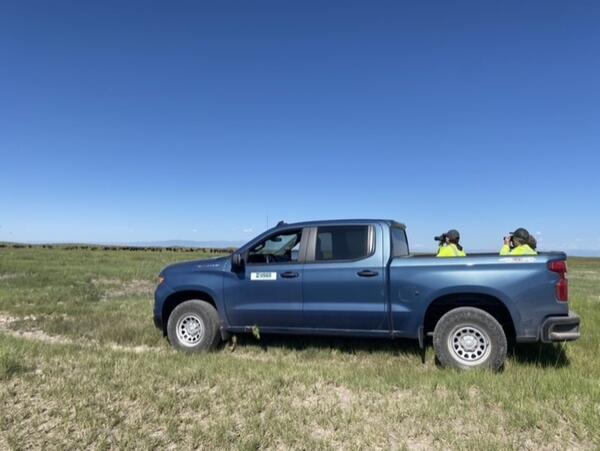
FORT wildlife biologists participate in multiple interagency teams exploring conservation and stewardship of our national mammal, the American bison. While there are over 350,000 bison living in the United States, only 15,000 of those are free-roaming, 11,000 of which are managed by DOI. These bison occur in 12 states and 18 isolated herds, all but one with fewer than 1000 individuals.
In 2024, the Bison Working Group — an interagency collaboration between bison managers and researchers at five DOI agencies, including USGS — coauthored a Shared Stewardship Strategy with representatives from multiple Tribes. This strategy outlines a collective vision for restoration of healthy, wild bison herds on Federal and Tribal lands.
Also in 2024, FORT scientists led development of a decision-making framework for a national coordination strategy for the conservation of genetic diversity in bison populations managed by DOI. The report provides sound science in support of management actions, such as translocations, to maintain bison herd health. Currently, FORT researchers are working on additional studies of the foraging ecology, genetics, and conservation of this iconic and beloved species, to ensure its legacy as America’s national mammal is sustained.
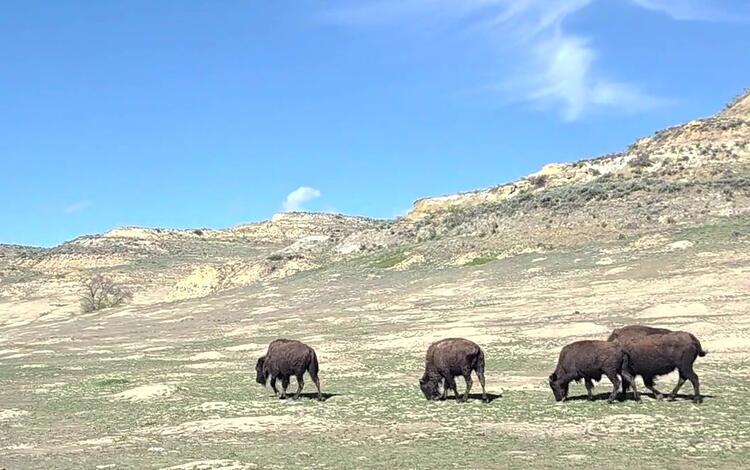
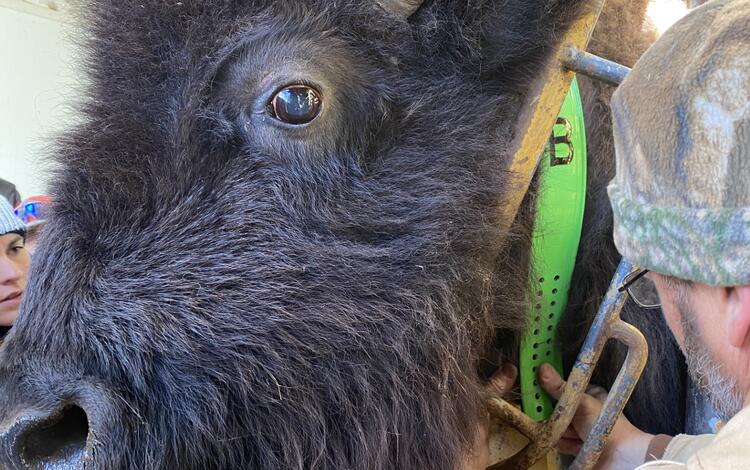
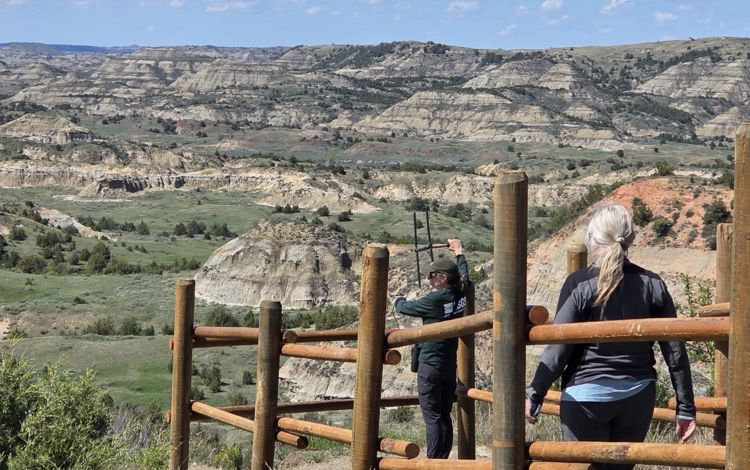
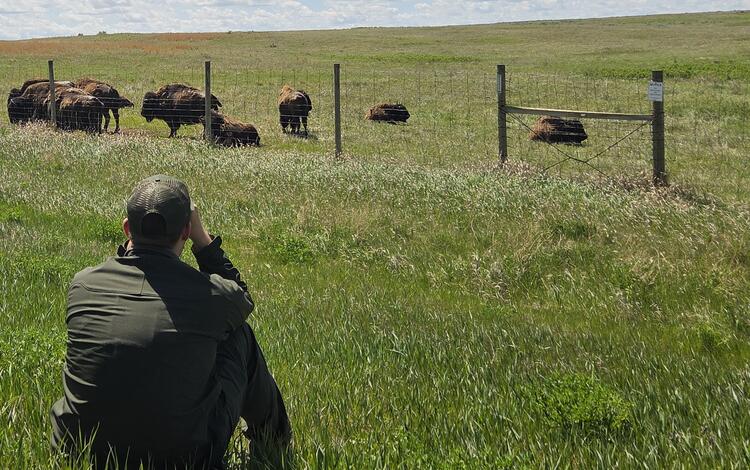
Reducing the regulatory burden for wildlife managers
FORT wildlife researchers are dedicated to the development of tools and science to aid decision making and species recovery under the Endangered Species Act, reducing the financial and regulatory burden wildlife managers face when managing listed species. Below are just a few of the projects related to these efforts, all of which support direct management needs.
Bats
The North American Bat Monitoring Program (NABat) was established in 2015 as a multi-national, multi-agency coordinated bat population monitoring program. Population status and trends and other analytical outputs provide resource managers with key information for managing bat populations, including federally listed endangered or threatened species in the United States. Data collected and assembled by NABat partners can be used to improve managers’ understanding of species distributions, detect signs of population declines, assess species vulnerability to potential threats, measure recovery, and much more. To facilitate the delivery of such information, the primary goals of the NABat program are to:
- Increase the quantity and quality of available data on North American bats
- Make data available for addressing bat conservation problems and management needs
- Use these data to provide regular updates on species status and trends
The NABat team is currently using bat monitoring data within their portal to pilot a new project with the Permitting Council. This project aims to streamline permitting on Federal lands, using innovative, secure technologies. Read more about this effort on the Land Management page.


Amphibians
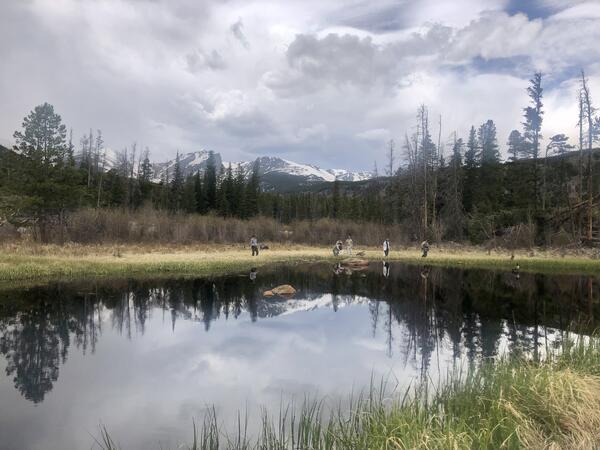
In the 1980s, researchers and resource managers began noticing large population declines in amphibians across the globe. In response to continuing declines, USGS initiated the Amphibian Research and Monitoring Initiative (ARMI) to support DOI in determining the status and trends of amphibians on Federal lands. At FORT, ARMI projects include ongoing, decades-long amphibian monitoring in Rocky Mountain National Park, along with studies of amphibian demography, ecology, environmental biology, and conservation on Federal lands in the Rocky Mountains. This work has informed population restoration practices directly, including studies on the efficacy of different amphibian reintroduction methods, genetic diversity of endangered toad populations, and amphibian responses to mitigation methods.
Bees

FORT researchers participate in a large working group dedicated to recovery and delisting of the only federally listed bee species, the rusty-patch bumble bee.
Related work includes the development of a national monitoring program for the species, diet analysis, and range-wide population genetic analyses to assist managers in reestablishing local populations of this species.
Additional research contributions to inform listing decisions
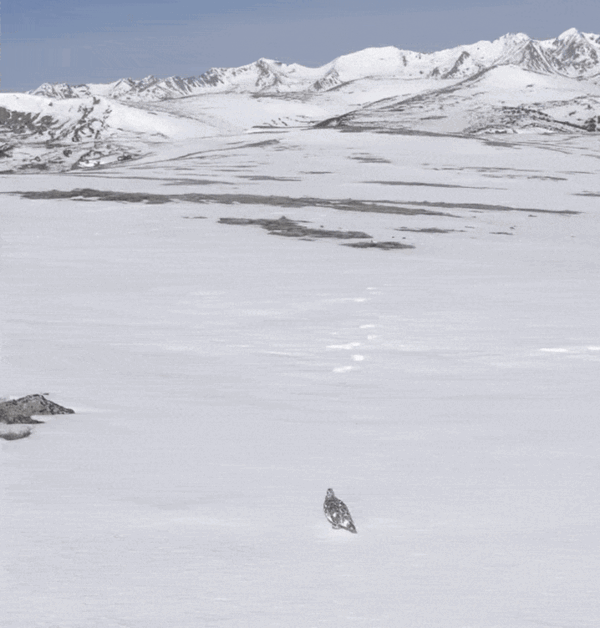
The Endangered Species Acts requires resource managers to use science in their listing decisions. In collaboration with resource managers and other partners, FORT scientists, including wildlife ecologists and the Molecular Ecology Lab, have contributed science that led to multiple exclusions from listing under ESA, including mountain plover, greater and Gunnison sage-grouse, Southern white-tailed ptarmigan, and trumpeter swans.
In other cases, like that for the Arizona toad, resource managers needed more information before a listing decision could be made, and FORT biologists have since provided reliable science that can inform future decisions.
Managing wild horses and burros
Free-roaming horses and burros of North America are both iconic wildlife of the western US and a complicated management issue on Federal public lands. Due to their history as domesticated animals, these feral equines can reproduce quickly, and have effectively no natural predators in the United States, allowing their populations to grow rapidly if not managed. When their populations are large, feral equines can degrade vegetation and water resources through overconsumption, reducing water availability and soil quality, and promoting the expansion of invasive plants. This reduces rangeland quality for grazing cattle, native wildlife, and the feral equines themselves.
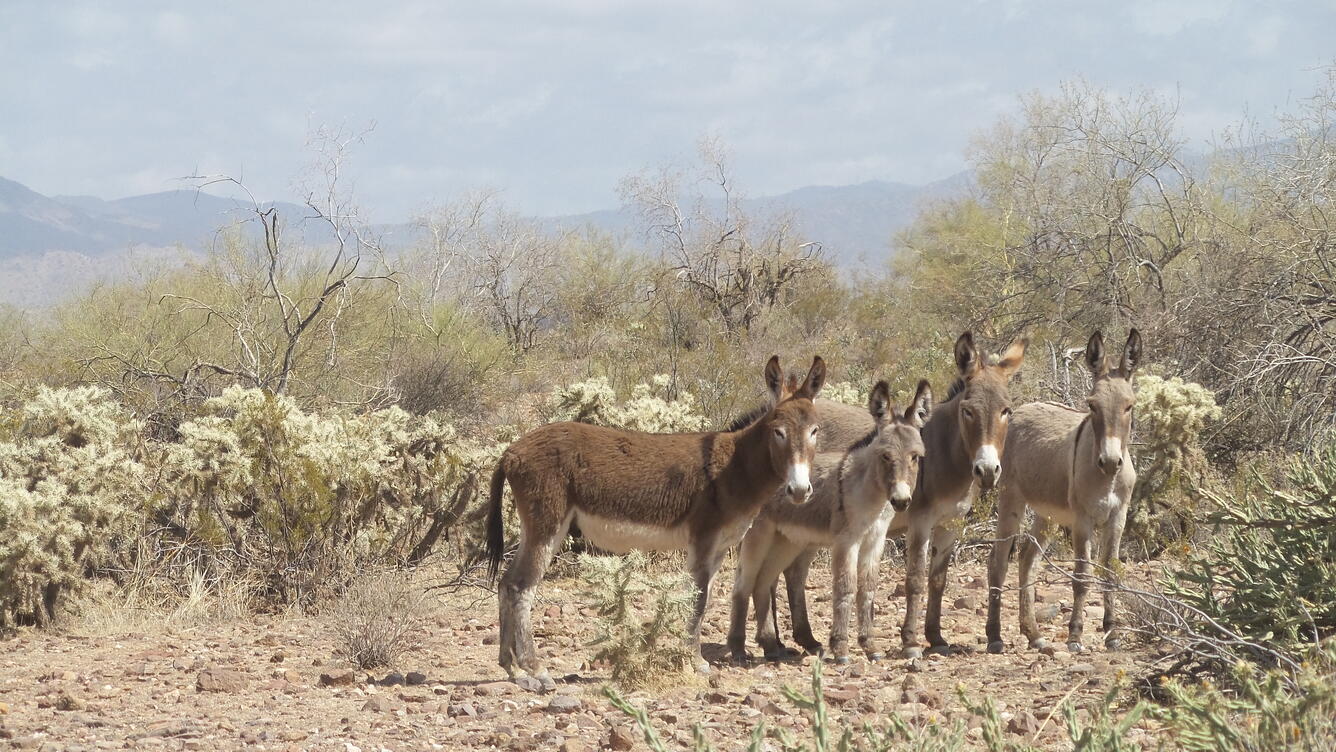
The Bureau of Land Management (BLM) spends over \$50 million a year on non-lethal control of free-roaming horse and burro populations, to both protect feral equines and accomplish BLM’s mission of managing public lands for multiple uses like recreation, hunting, and ranching. This includes estimating population sizes to ensure herds are not too large for a single management area. To assist, scientists at FORT have spent decades working with the BLM to develop effective population monitoring methods, including developing safe radio-collars, aerial surveys, and statistical modeling for accurate estimation of feral horse and burro population sizes. Along with this work, they have also tested multiple different methods of contraception, to assist managers in finding cost-efficient ways to reduce free-roaming horse and burro populations and reduce the need for controversial helicopter round-ups.

Wildlife science for improved hunting, fishing, and outdoor recreation
FORT biologists, geneticists, social scientists and economists provide much needed information to wildlife managers developing plans for parks, refuges, or other public spaces. For example, National Parks and wildlife refuges frequently request assistance from FORT biologists to accurately count, monitor, and study ungulate feeding behavior so that they can effectively manage population sizes and conserve habitat for future recreation opportunities.
FORT researchers study the biology of fish to inform management of healthy fish populations. This research includes:
Assessments of natural barriers to Greenback Cutthroat trout reintroduction
Examination of watershed nutrient requirements for Coho and Chinook salmon
Synthesizing research on culverts and fish habitat connectivity
FORT economists and social scientists provide essential information on the value of wildlife and wildlife-related recreation, including:
Developing approaches to calculating the price of wildlife viewing
Studying the wildlife-viewing behavior and interests of park visitors
Estimating the economic value of salmon
Measuring the economic value of angling on recreational fisheries
Analysis of hunting values
Informing waterfowl management
Molecular science for defensible wildlife management
The FORT Molecular Ecology Lab (MEL) applies cutting-edge technology to generate sound, reliable science for many of the studies above. They also work closely with wildlife managers across the country on integrative studies of wildlife pathogen genomics, detection of difficult-to-observe species, genomic sequencing and analysis, landscape genetics, molecular tagging, population modeling, and diet analysis. This work addresses a variety of complex issues facing wildlife managers, including:
- Population monitoring of native wildlife for permitting and other land management decisions
- Wildlife disease monitoring and control
- Surveillance of non-native wildlife and invasive species control
- Prevention of species listing, including the examples above
- Management of big game species
Shrubland, Alpine and Grassland Ecology (SAGE) Wildlife Research Group
Molecular Ecology Lab (MEL)
North American Bat Monitoring Program (NABat)
USGS Ecosystems Science in Support of Economic Growth
Economics of Outdoor Recreation
Wildlife Economics
Counting America’s Wild Horses and Burros: Better Estimates for Population Management
Food Webs and Wildlife Nutrition
North American Waterfowl Management Plan
Mapping wild horse densities across broad landscapes of the Western United States
Greater Sage-Grouse Population Monitoring Framework
Development and application of genomic resources for the greater sage-grouse
FORT researchers provide sound science to support the Department of Interior in its efforts to preserve American heritage, streamline species listing decisions and promote species recovery, manage wild horses and burros using efficient, cost-effective tools, and sustain hunting and fishing on public lands.
This research is developed in partnership with resource managers from local, State, Federal and Tribal governments, industry, and nongovernmental organizations, empowering local and rural communities to make decisions for themselves using high-quality data and smart tools.
Preserving America’s heritage

FORT wildlife biologists participate in multiple interagency teams exploring conservation and stewardship of our national mammal, the American bison. While there are over 350,000 bison living in the United States, only 15,000 of those are free-roaming, 11,000 of which are managed by DOI. These bison occur in 12 states and 18 isolated herds, all but one with fewer than 1000 individuals.
In 2024, the Bison Working Group — an interagency collaboration between bison managers and researchers at five DOI agencies, including USGS — coauthored a Shared Stewardship Strategy with representatives from multiple Tribes. This strategy outlines a collective vision for restoration of healthy, wild bison herds on Federal and Tribal lands.
Also in 2024, FORT scientists led development of a decision-making framework for a national coordination strategy for the conservation of genetic diversity in bison populations managed by DOI. The report provides sound science in support of management actions, such as translocations, to maintain bison herd health. Currently, FORT researchers are working on additional studies of the foraging ecology, genetics, and conservation of this iconic and beloved species, to ensure its legacy as America’s national mammal is sustained.




Reducing the regulatory burden for wildlife managers
FORT wildlife researchers are dedicated to the development of tools and science to aid decision making and species recovery under the Endangered Species Act, reducing the financial and regulatory burden wildlife managers face when managing listed species. Below are just a few of the projects related to these efforts, all of which support direct management needs.
Bats
The North American Bat Monitoring Program (NABat) was established in 2015 as a multi-national, multi-agency coordinated bat population monitoring program. Population status and trends and other analytical outputs provide resource managers with key information for managing bat populations, including federally listed endangered or threatened species in the United States. Data collected and assembled by NABat partners can be used to improve managers’ understanding of species distributions, detect signs of population declines, assess species vulnerability to potential threats, measure recovery, and much more. To facilitate the delivery of such information, the primary goals of the NABat program are to:
- Increase the quantity and quality of available data on North American bats
- Make data available for addressing bat conservation problems and management needs
- Use these data to provide regular updates on species status and trends
The NABat team is currently using bat monitoring data within their portal to pilot a new project with the Permitting Council. This project aims to streamline permitting on Federal lands, using innovative, secure technologies. Read more about this effort on the Land Management page.


Amphibians

In the 1980s, researchers and resource managers began noticing large population declines in amphibians across the globe. In response to continuing declines, USGS initiated the Amphibian Research and Monitoring Initiative (ARMI) to support DOI in determining the status and trends of amphibians on Federal lands. At FORT, ARMI projects include ongoing, decades-long amphibian monitoring in Rocky Mountain National Park, along with studies of amphibian demography, ecology, environmental biology, and conservation on Federal lands in the Rocky Mountains. This work has informed population restoration practices directly, including studies on the efficacy of different amphibian reintroduction methods, genetic diversity of endangered toad populations, and amphibian responses to mitigation methods.
Bees

FORT researchers participate in a large working group dedicated to recovery and delisting of the only federally listed bee species, the rusty-patch bumble bee.
Related work includes the development of a national monitoring program for the species, diet analysis, and range-wide population genetic analyses to assist managers in reestablishing local populations of this species.
Additional research contributions to inform listing decisions

The Endangered Species Acts requires resource managers to use science in their listing decisions. In collaboration with resource managers and other partners, FORT scientists, including wildlife ecologists and the Molecular Ecology Lab, have contributed science that led to multiple exclusions from listing under ESA, including mountain plover, greater and Gunnison sage-grouse, Southern white-tailed ptarmigan, and trumpeter swans.
In other cases, like that for the Arizona toad, resource managers needed more information before a listing decision could be made, and FORT biologists have since provided reliable science that can inform future decisions.
Managing wild horses and burros
Free-roaming horses and burros of North America are both iconic wildlife of the western US and a complicated management issue on Federal public lands. Due to their history as domesticated animals, these feral equines can reproduce quickly, and have effectively no natural predators in the United States, allowing their populations to grow rapidly if not managed. When their populations are large, feral equines can degrade vegetation and water resources through overconsumption, reducing water availability and soil quality, and promoting the expansion of invasive plants. This reduces rangeland quality for grazing cattle, native wildlife, and the feral equines themselves.

The Bureau of Land Management (BLM) spends over \$50 million a year on non-lethal control of free-roaming horse and burro populations, to both protect feral equines and accomplish BLM’s mission of managing public lands for multiple uses like recreation, hunting, and ranching. This includes estimating population sizes to ensure herds are not too large for a single management area. To assist, scientists at FORT have spent decades working with the BLM to develop effective population monitoring methods, including developing safe radio-collars, aerial surveys, and statistical modeling for accurate estimation of feral horse and burro population sizes. Along with this work, they have also tested multiple different methods of contraception, to assist managers in finding cost-efficient ways to reduce free-roaming horse and burro populations and reduce the need for controversial helicopter round-ups.

Wildlife science for improved hunting, fishing, and outdoor recreation
FORT biologists, geneticists, social scientists and economists provide much needed information to wildlife managers developing plans for parks, refuges, or other public spaces. For example, National Parks and wildlife refuges frequently request assistance from FORT biologists to accurately count, monitor, and study ungulate feeding behavior so that they can effectively manage population sizes and conserve habitat for future recreation opportunities.
FORT researchers study the biology of fish to inform management of healthy fish populations. This research includes:
Assessments of natural barriers to Greenback Cutthroat trout reintroduction
Examination of watershed nutrient requirements for Coho and Chinook salmon
Synthesizing research on culverts and fish habitat connectivity
FORT economists and social scientists provide essential information on the value of wildlife and wildlife-related recreation, including:
Developing approaches to calculating the price of wildlife viewing
Studying the wildlife-viewing behavior and interests of park visitors
Estimating the economic value of salmon
Measuring the economic value of angling on recreational fisheries
Analysis of hunting values
Informing waterfowl management
Molecular science for defensible wildlife management
The FORT Molecular Ecology Lab (MEL) applies cutting-edge technology to generate sound, reliable science for many of the studies above. They also work closely with wildlife managers across the country on integrative studies of wildlife pathogen genomics, detection of difficult-to-observe species, genomic sequencing and analysis, landscape genetics, molecular tagging, population modeling, and diet analysis. This work addresses a variety of complex issues facing wildlife managers, including:
- Population monitoring of native wildlife for permitting and other land management decisions
- Wildlife disease monitoring and control
- Surveillance of non-native wildlife and invasive species control
- Prevention of species listing, including the examples above
- Management of big game species













